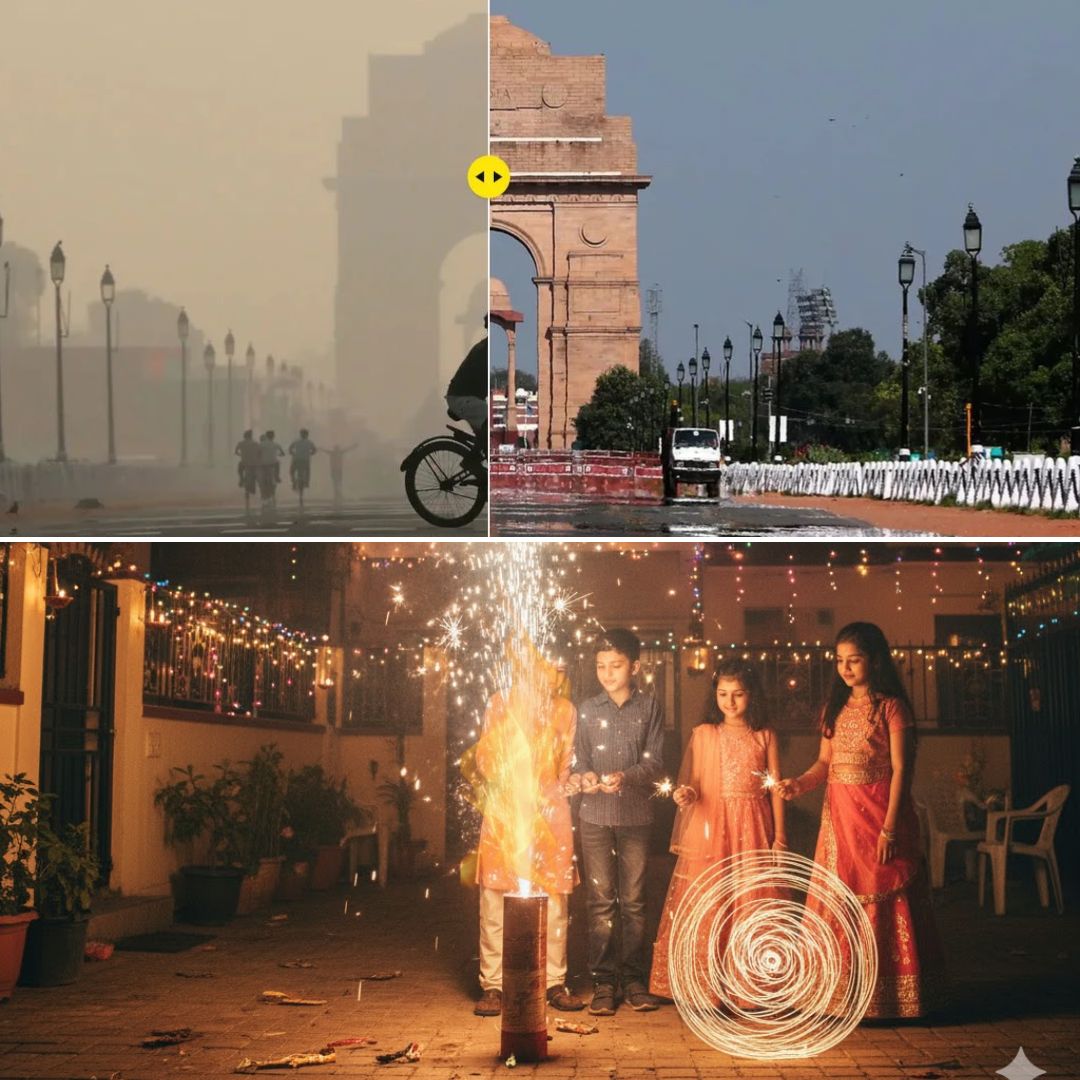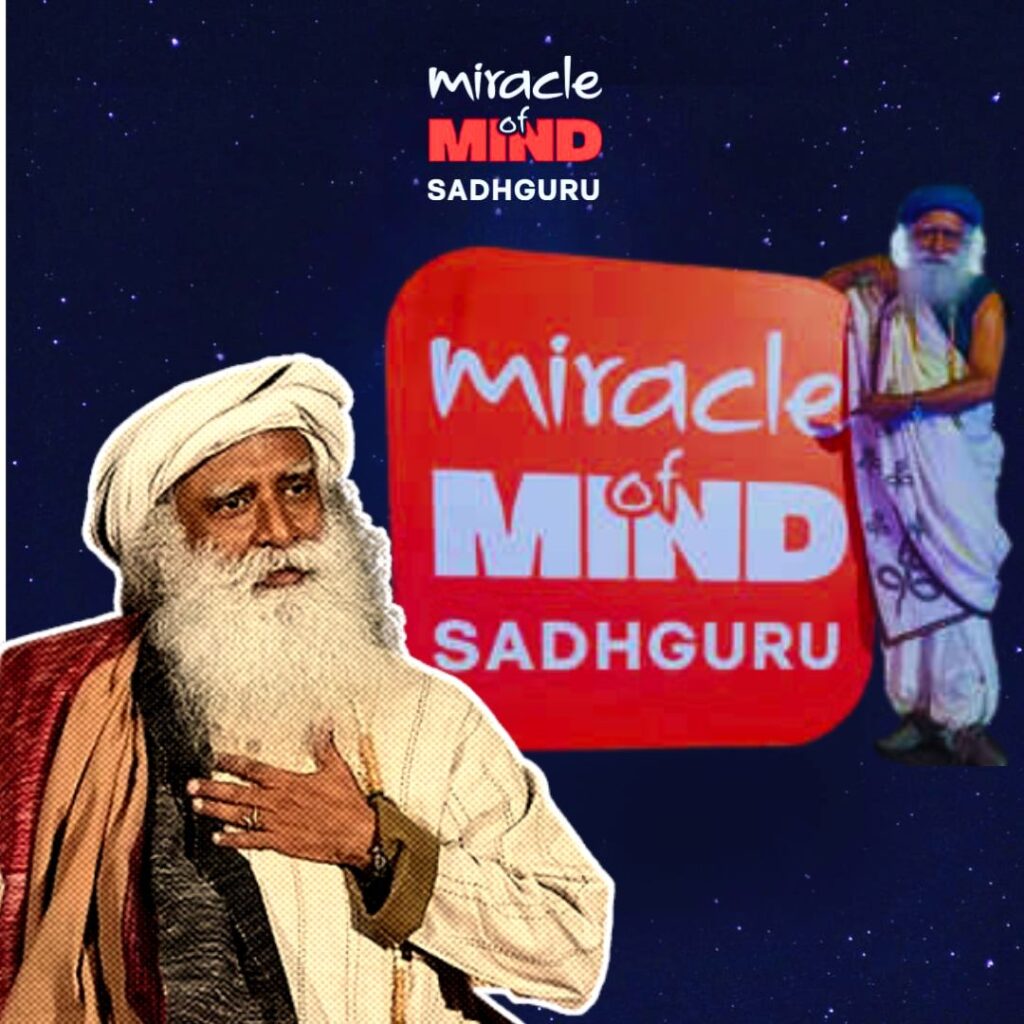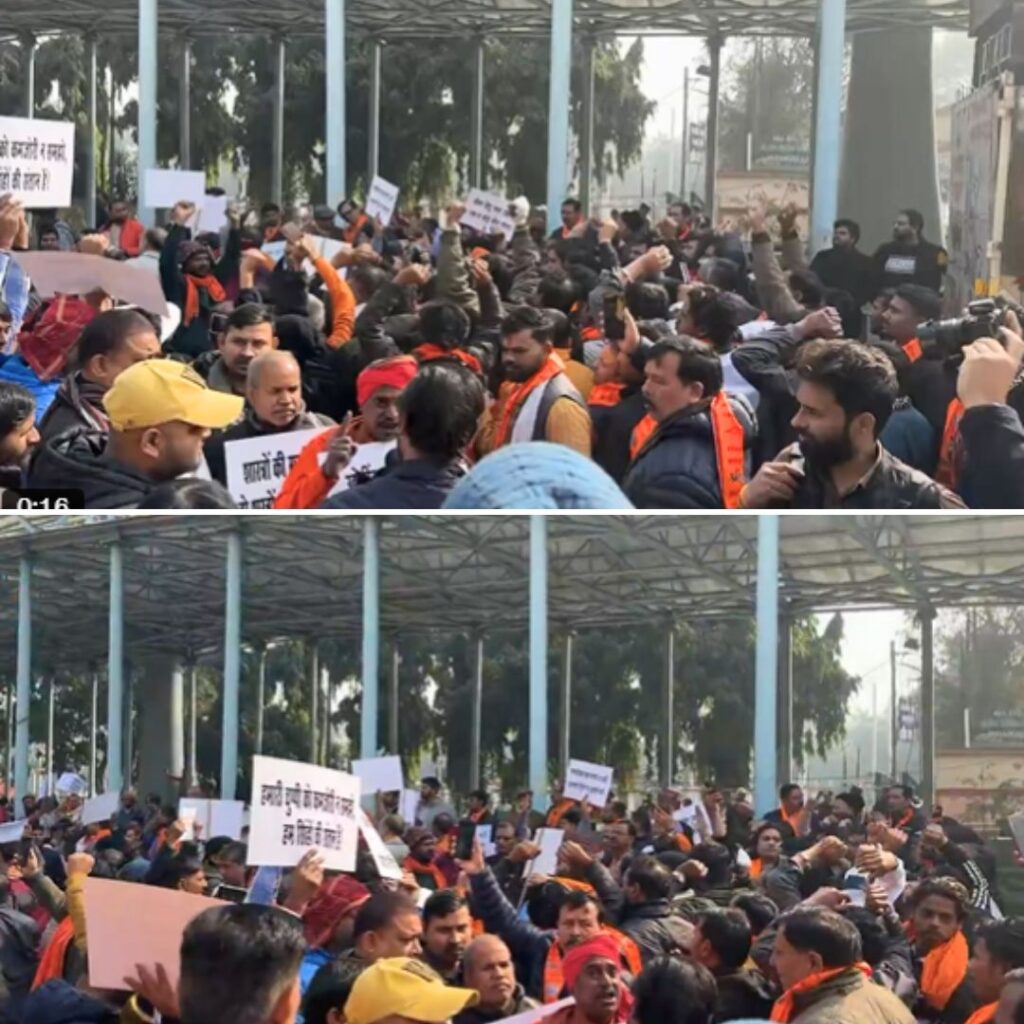As residents across Delhi celebrated Diwali with fireworks late into Monday night, the capital’s air quality nosedived to the ‘very poor’ and ‘severe’ categories by Tuesday morning. The Central Pollution Control Board (CPCB) recorded an overall Air Quality Index (AQI) of 347 at 7 a.m., with 36 of 38 monitoring stations falling in the red zone.
Major hotspots such as Wazirpur (423), Dwarka (417), Anand Vihar (404), and Jahangirpuri (407) registered ‘severe’ pollution levels, while even residential zones like Lodhi Road and ITO hovered around 340–350.
Despite Supreme Court restrictions allowing only green firecrackers for limited hours, emissions rose sharply, prompting the continuation of Stage II of the Graded Response Action Plan (GRAP) across Delhi-NCR.
Capital Engulfed in Toxic Smog
Thick grey smog blanketed Delhi’s skyline on Tuesday morning – a haunting ritual that follows every Diwali celebration. Visibility dropped below 100 metres in some neighbourhoods, and the air carried an acrid smell of burnt powder. By 8 a.m., Delhi’s average AQI stood at 350 , marking one of the worst post-Diwali mornings in three years. CPCB’s SAMEER app indicated that several areas breached the AQI 400 mark, reflecting hazardous pollution levels.
Fire stations received over 260 calls overnight, mostly for minor blazes triggered by fireworks, but no serious injuries were reported. DPCC officials confirmed that unregulated firecracker bursting continued beyond the permissible 8 p.m. to 10 p.m. window.
Delhi Chief Minister Rekha Gupta reiterated her appeal for public cooperation, stating, “This is not just a policy matter anymore – it’s a public health emergency in slow motion.” Health experts warned that prolonged exposure could aggravate respiratory diseases, especially among children and the elderly.
Rising Pollution Despite Crackdown Efforts
In the days leading up to the festival, authorities had enforced preventive action under GRAP Stage II, banning most construction and dust-inducing activities. The Supreme Court, while allowing green crackers between October 18 and 20, aimed to strike a balanced approach between tradition and sustainability. However, enforcement faltered as non-compliance remained widespread.
According to data from SAFAR and CPCB, particulate matter (PM2.5) concentration stood at more than 15–18 times the safe limit of 60 µg/m³ across north and central Delhi on Tuesday morning. Officials attributed the spike to meteorological factors, including stagnant wind speeds below 5 kmph and reduced atmospheric dispersion. Experts also flagged the onset of stubble burning in Punjab and Haryana as contributing to the pollution surge.
The CAQM has warned that without rain or stable winds, Delhi’s air could remain in the ‘severe’ category throughout the week. Last year, the city had reported an average post-Diwali AQI of 359, nearly similar to this year’s levels, indicating minimal progress despite intensified awareness campaigns.
Human Cost and Call for Responsibility
Residents took to social media with visuals of dense smog around India Gate and Connaught Place, expressing frustration at the recurring pattern. “We are gasping, not living,” one Delhiite wrote on X (formerly Twitter), echoing a sentiment of helplessness and anger. Public health experts highlighted that elevated PM2.5 levels pose serious risks even for healthy adults, linking Delhi’s air quality spikes to rising cases of asthma, bronchitis, and cardiovascular complications.
Environmental groups, including Centre for Science and Environment (CSE), urged stricter enforcement of cracker bans and long-term investment in public transport and green zones. While the Environment Ministry has insisted that GRAP measures would help “stabilise” conditions, experts remain sceptical given the recurring post-festival spikes.
The Logical Indian’s Perspective
Year after year, the morning after Diwali serves as a painful reminder that celebration without restraint can darken the very skies we wish to light. Delhi’s deepening smog is not just a matter of air quality but a mirror to collective accountability.
While bans and policies play their part, real transformation begins with empathy – the willingness to prioritise public well-being over momentary pleasure.












